Here is the second part of the SS-Standort Dachau. I hope you find it interesting and worth the reading.
July 7, 1935
Theodor Eicke is appointed inspector of the concentration camps and SS guard units.
September 1, 1935
On September 1, 1935, the SS training camp was officially opened. It was given its own commandant’s office, which formed a unit directly subordinate to the SS main office.
(Kaienburg, Economy, p. 118, see also note 9)
The II Sturmbann of the SS-Standarte 1 was still in the camp.
(Otto Weidinger, Division Das Reich, Volume I, Munin, 1967, p. 32ff)
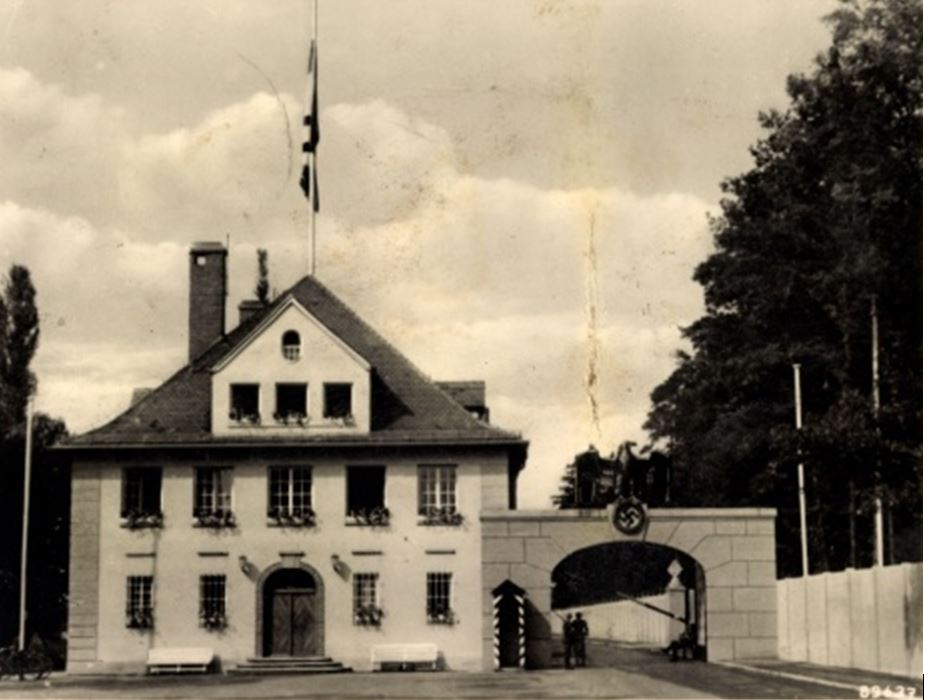
“.. Horst Peiper, promoted to SS-Untersturmführer on April 20, 1937 after attending the SS-Junkerschule Tölz (SS-Ostuf. from November 11, 1938), was temporarily assigned to the main SS training camp in Dachau.
The so-called SS training camp Dachau existed from October 1935 to October 1939 and was home to parts of the disbanded “Austrian Legion” (Hilfswerk Österreich). The commandant’s office had a strength of about a hundred men; it was considered a special unit of the Reichsführung-SS
The commander was initially Obersturmbannführer Karl-Maria Demelhuber, then “Blood Order Bearer” Oberführer Georg Aumeier. Aumeier had been Himmler’s adjutant and Reich Managing Director of the SS from 1930 to 1931. …
(Jens Westermeier, Himmler’s Warriors, Joachim Peiper and the Waffen-SS in the War and Post-War Period, Schöningh Verlag, 2014, p. 133)

In September, the SS-Wirtschaftsbetriebe Dachau was placed under the command of the newly built SS training camp in Dachau as an “… independent Sturmbann…”.
Although from this time onwards the field commander of the SS training camp was the superior of the SS personnel in the commercial enterprises, the administrative office was able to assert a say in promotions.
Three and a half years later, the insinuation was reversed and the SS personnel of the SS business enterprises were finally officially integrated into the organization of the SS administrative chief.
(Schulte, Forced Labor, p. 100, note 34: “… There is currently no study on the SS training camp at Dachau. Probably built in 1935 as a training camp with attached barracks for the new SS disposition force, it was located directly next to the KL Dachau. The training camp was part of a large SS complex. This included the KL, the barracks for the SS-Totenkopfsturmbann Oberbayern, the accommodation for a Sturmbann of the SS-VT as well as the workshops of the Porzellan-Manufaktur Allach/München GmbH and an SS-owned housing estate …”)
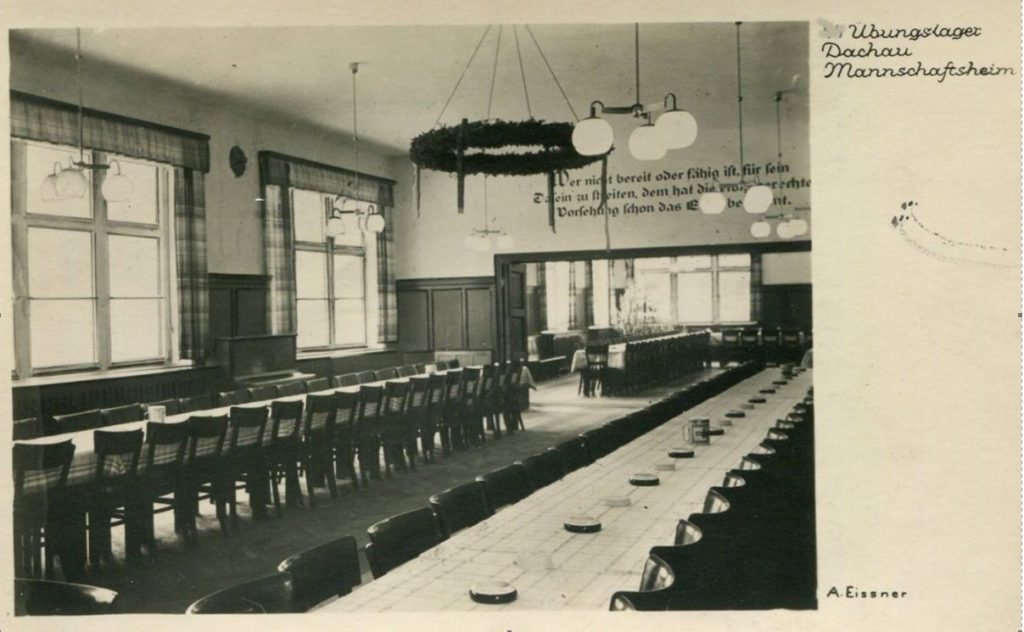
November 22, 1935
In connection with the planned establishment of a “medical corps of the SS-VT and the SS-T. (guard) associations” in the financial year 1936, the “SS’ own hospital departments of the barracked SS” were put into operation, but were facilities of the General SS. In addition to treating patients, these hospital departments also provided training and further education for medical staff. For this purpose, medical schools were attached to the hospitals. (see also BA-MA N 756 Wolfgang Vopersal, SS hospitals general, undated, 4 pages)
The first “SS hospital” was set up in Dachau by order of the SS main office on November 22, 1935 as an “SS site hospital” with initially 50 beds.
From the summer of 1936, a more precise date cannot yet be specified, an SS dental station was attached to the SS hospital.
Also in the “summer of 1936” the SS Medical Squadron Munich was set up as the hospital staff.
(BA-MA N 756 Wolfgang Vopersal, SS Hospital Dachau, undated, 2 pages, here p.1)
In October 1936, the hospital was opened with the establishment of a department for internal diseases including an isolation ward for segregation patients under the direction of SS-Hauptsturmführer Dr.med. Stoye and a surgical department expanded.
(BA-MA N 756 Wolfgang Vopersal, SS Hospital Dachau, undated, 2 pages, here p.1)
With effect from November 1, 1936, the dental station in Dachau and the newly built X-ray station, SS-Obersturmführer Müller, were placed under the control of the chief physician of the SS hospital in Dachau.
(BA-MA N 756 Wolfgang Vopersal, SS Hospital Dachau, undated, 2 pages, here p.1)
December 10, 1935
SS Oberführer Heinrich Deubel becomes the new commander in Dachau.
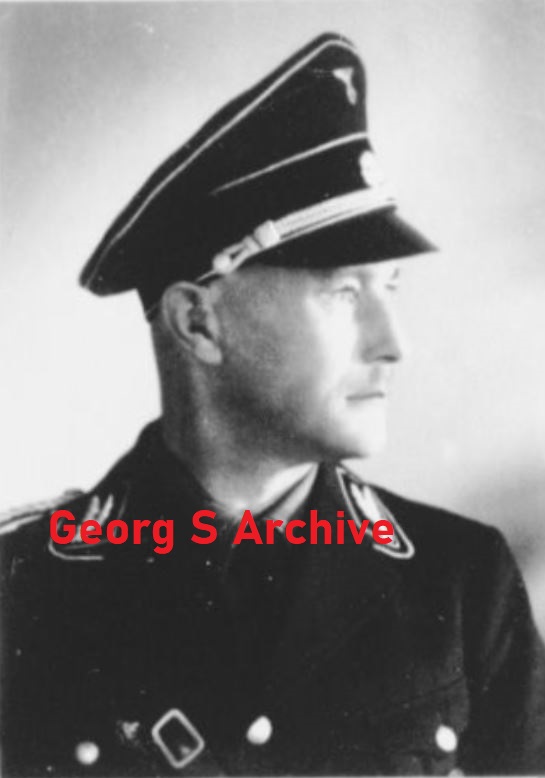
1936
This was followed in 1936 by the establishment of pig and chicken stables as well as rooms for gas warfare exercises, an expansion of the concentration camp prisoner camp in the south, the conversion of a command building with rooms for the supervisors, the labor service and the identification service, and the construction of a disinfection system.
(Kaienburg, Economy, p. 119)
In 1936/37 the vehicle workshops, garages and gas stations for the two vehicle fleets of the KL and the TV were relocated to other buildings that had been prepared for this purpose.
The metalworking shop also moved to another building.
Also started and completed during this period:
a gymnastics equipment warehouse,
a weapons master preschool,
a sports facility including tennis and handball courts as well
an outdoor swimming facility.
(Kaienburg, Economy, p. 119)
Since the establishment of accommodation for students from the SS leader, later Junker, schools in Bad Tölz (and Braunschweig, the author) who came to Dachau for military exercises (“platoon leader course”, the author), there have been quarters for around 2,500 in the entire area SS leaders, sub-leaders and enlisted men.
(Kaienburg, Economy, p. 119)

April 1, 1936
On April 1, 1936, the association was renamed and reclassified to “SS-Totenkopf-Sturmbann I “Oberbayern”. The previous name Wach-Unit was used for other units.
Paul Krauss, 1st Hundred, reported in 1936: “… In the meantime I had been promoted to Oberscharführer (sergeant). Now I had to take part in one internal troop course after the other. The SS gave its men nothing, but it offered every mentally, physically and characterically suitable and healthy young man the opportunity to become an officer, i.e. a leader. …
Meanwhile, civil war had broken out in Spain. Many of us, including me, volunteered to fight against the Reds in Spain. We came forward because we knew how close we had been to civil war in Germany in 1932-1933. Hitler’s rise to power saved us back then. Our report was not accepted. But our troop commander at the time went to Spain and died there. On the German side, the fight in Spain against the Red Terror remains reserved for the “Legion Kondor”. …”
With effect from January 1, 1937, I was transferred to the SS-Totenkopfstandarten Unterführerschule as an instructor. …”.
Krauss did not return to the regiment until 1940 as SS-Untersturmführer, then already SS-TIR 1 as part of the SS-T Division.
(I too am a witness from the century, Paul Krauß, self-published Coburg, second improved and supplemented edition, written in the first quarter of 1983, supplemented in 1991, 75 pages, pp. 32 – 33)
On April 1, 1936, SS-Oberführer Hans Loritz became commander of KL Dachau.
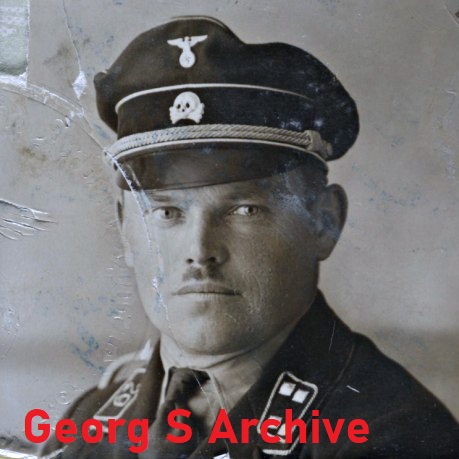
In the “summer of 1936” the Sturmbann II/1 was initially moved from the SS training camp to the Herzog Wilhelm barracks in Munich for a short time and remained here until the fall of 1936, when it moved into the new SS “Germany” barracks the Ingolstädter Landstrasse in Munich-Freimann.
(Otto Weidinger, Division Das Reich, Volume I, Munin, 1967, p. 33)
October 1, 1936
In August/September 1936, after the II./SS-“D” moved to the Munich-Freimann regimental barracks, the permanent personnel for a new Sturmbann, the SS-“N”, were ordered to the Prittlbach training camp and prepared for the deployment of the Sturmbann .
The leaders and sub-leaders of the permanent staff were provided by the LSSAH and the standard “Germany”.
October 1, 1936 was set as the installation date. The Sturmbann was structured as an infantry battalion (hauled).
Rod,
News and Music Train
3 rifle companies
1 machine gun company
1 motor vehicle column.
The name “SS-N” meant “Nuremberg”, the independent Sturmbann was later assigned the city of Nuremberg as its location, with the task of being available there as a guard battalion at the Nazi party rallies, similarly representative events and congresses.
The construction of new barracks in Nuremberg began when the battalion was formed. Until it was completed, the Sturmbann was to be housed in the troop quarters of the Prittlbach training camp.
The permanent staff was almost complete on October 1, 1936. However, since the allocation of recruits was very small, only the 2nd and 4th companies were filled with recruits. That’s why the storm spell only reached around 60% of its target strength by the end of the year.
It was not until 1937 that the formation was completed and drill, weapons and combat training was carried out and the equipment with equipment, weapons, combat vehicles and horses was completed.
(Otto Weidinger, Division Das Reich, Volume I, Munin, 1967, p. 90)
Schützen-Hundertschaft 1./I /SS-TV 120 Mann
Schützen-Hundertschaft 3./I /SS-TV 120 “
Schützen-Hundertschaft 5./I /SS-TV 122 “
Schützen-Hundertschaft 7./I /SS-TV 120 “
Schützen-Hundertschaft 9./I /SS-TV 120 “
Schützen-Hundertschaft 11./I /SS-TV 118 “
MG- Hundertschaft 20./I /SS-TV 105 “
MG- Hundertschaft 25./I /SS-TV 105 “
MZ/I /SS-TV 38 “
Stab I./SS-TV 23 “
San.Rekr.Zug/I /SS-TV 13 “
The Sturmbann I./SS-TV “Oberbayern” provides the guard command for the Dachau concentration camp
…
(Hermann Kaienburg, The military and economic location of the SS in the Sachsenhausen-Oranienburg concentration camp site, series of publications by the Brandenburg Memorials Foundation, vol. 16, Metropol-Verlag, Berlin, 2006, pp. 54-55)
From November 1936 to mid-1937, the SS infirmary was expanded into a modern hospital by converting and building five new barracks, including a nurses’ home, including two operating rooms, an X-ray and a dental ward.
(Kaienburg, Economy, p. 119)
In addition to the SS location in Dachau, a similar development began in 1936 as an economic and military complex until 1939 at the SS location in Oranienburg – Sachsenhausen.
(Kaienburg, Economy, p. 132ff
1937
In 1937, the concentration camp was demolished and completely rebuilt using funds from the Reich budget to accommodate 6,000 inmates in 30 barracks.
In addition, there was a large solid-construction farm building on the south side,
There is also a detention building, canteen, teaching barracks, two infirmary barracks with modern facilities (including an operating room, dental ward), small workshops, watchtowers and fortifications, a greenhouse for the small camp nursery and other buildings.
(Kaienburg, Economy, p. 119)
In the same year, new horse stables, a covered lumberyard and a hall for wood cutting for the carpentry shop as well as casino rooms for members of the KL commandant’s office were built in the old buildings west of the camp.
(Kaienburg, Economy, p. 119)
After appropriate renovations, the Allach porcelain factory moved into two buildings in the SS training camp.
(Kaienburg, Economy, p. 120)
The “Reichsschatzmeister-Schwarz-Platz” was expanded for large parades and a shooting range including accommodation rooms, workshops, small animal stables, dog kennels and other facilities was built about one kilometer outside the camp complex near the community of Hebertshausen at the expense of the Reich.
(Kaienburg, Economy, p. 120)
In 1937/38 new SS accommodation was added. For strengthening the skull formations
2,000 men, financed by the Reich, built twelve barracks for 750 men, along with commercial and teaching buildings, on the site of the former garden center.
(Kaienburg, Wirtschaft, p. 120, see also note 13 on the statement 2,000 men: The information is taken from the chronicle, page 9, the above, according to which there is a total of space for 2,500 SS members, also from page 8 Both numbers are probably correct, the desired number of personnel is only the militarily organized SS units, according to Kaienburg)
A barracks for 240 additional Junker students was completed in February 1938.
(Kaienburg, Economy, p. 120)
The SS leased an area of around 300 hectares northeast of the camp as a parade and training area, far larger than the entire previous facility.
(Kaienburg, Economy, p. 120)
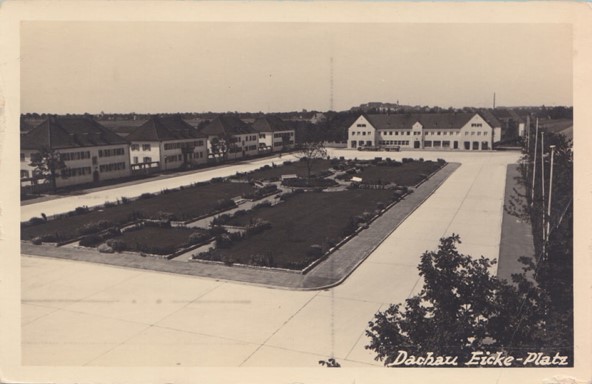
In addition, the residential buildings outside the camp fence at “Lagerstrasse” 1 to 37 – later the “Straße der SS” from 1938 – and at the newly created “Eicke-Platz” I in front of the entrance building to the concentration camp, from which those who did not belong to the SS Tenants had to move out in 1934/35, renovated and repaired in the following years; also five residential buildings in the municipality of Hebertshausen.
From 1937 to 1938, additional houses for SS leaders were built on and in the area around Eicke-Platz, a total of 20 buildings with 75 apartments and a few shops.
In 1938, these new buildings became the property of the SS-owned company Gemeinnütziger Wohnungs- und Heimstätten GmbH. Since the property owners did not sell their land as desired, they were expropriated.
(Kaienburg, Economy, p. 120)
The various SS units in the SS complex in Dachau were also identifiable by their postal address from around 1937 at the latest – documented since then from SS personnel files:
Dachau 3/K meant “concentration camp”,
Dachau 3/Ü “Practice Camp”
Dachau 3/B “clothing warehouse”, later “-werk”,
At times there were additional units in Dachau,
Dachau 3/O skull standard “Upper Bavaria”
Dachau 3/F “Fahrenkamp” office
Dachau 3/Z is apparently the SS housing estate south of D. warehouse
(Kaienburg, Economy, p. 118, note 9)
According to the SS administration, the total costs of the repair and new construction work in the Dachau complex from 1933 to 1937 amounted to approximately 9.25 million RM.
According to this information, the value of all buildings, systems and land including furnishings rose from around 4.0 million RM at the time of the takeover in March 1933 to around 25.8 million RM at the end of 1937; Of these, approximately 14.2 million RM were formally the property of the German Reich and 11.6 million RM were the property of the NSDAP.
According to the responsible officer in the SS administration office, the establishment of the Dachau camp and the further repair and conversion work in the first few years were paid for by the Bavarian state, while the NSDAP initially financed the expenditure on the troop sector. From 1936 onwards, the funds for the SS Death’s Head Associations, and from 1937/38 also those for the concentration camps, came from the Reich budget.
The purchase price for which the NSDAP acquired the complex in 1936 was therefore more of a symbolic nature. Within five years, minus the investment costs, an increase in value of around 12.6 million RM was achieved, particularly through the free labor of the concentration camp prisoners .
For the SS leadership, which of the two was considered the owner was of secondary importance. She was the beneficiary in both cases, and no one dared question this.
(Kaienburg, Economy, p. 122, see also note 19)
Author – Roland Pfeiffer, some images Georg Schwab
End of Part 2. Next chapter will soon be published


